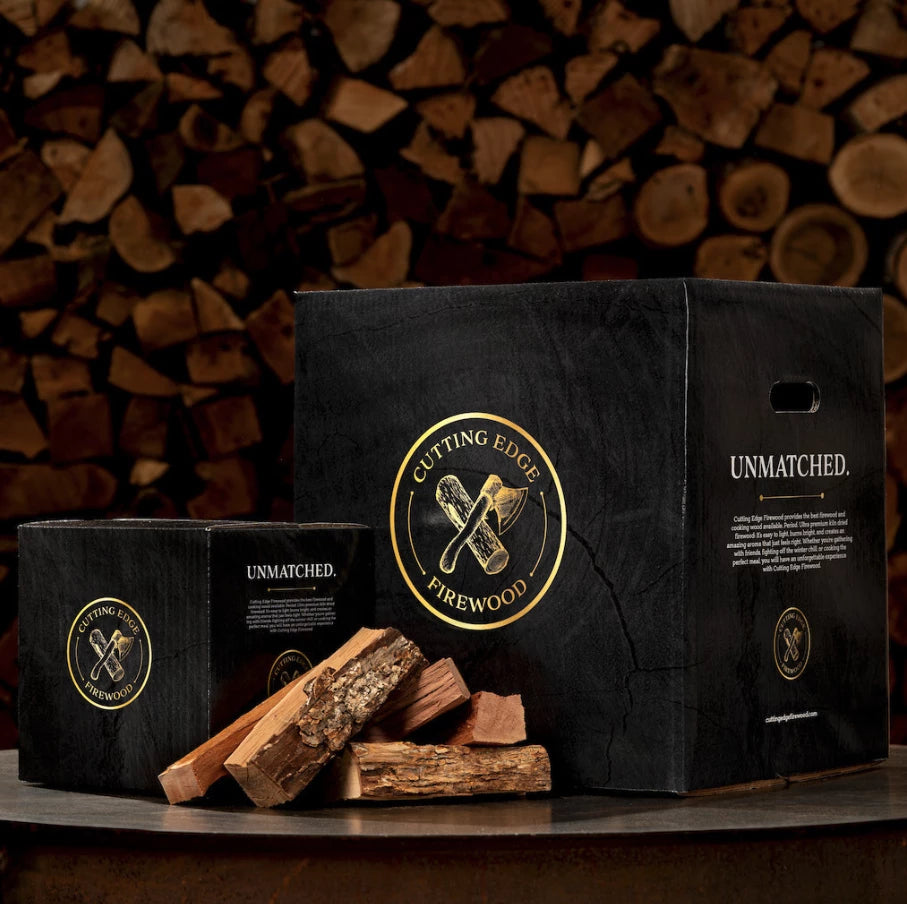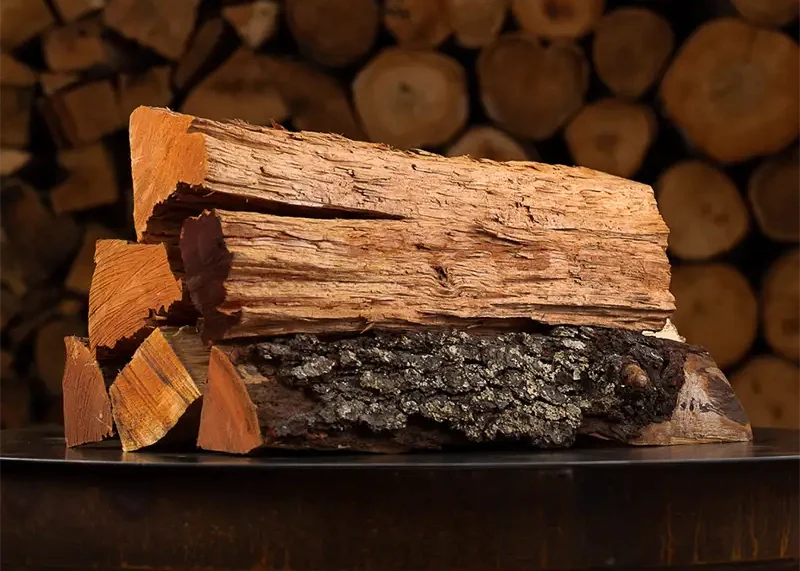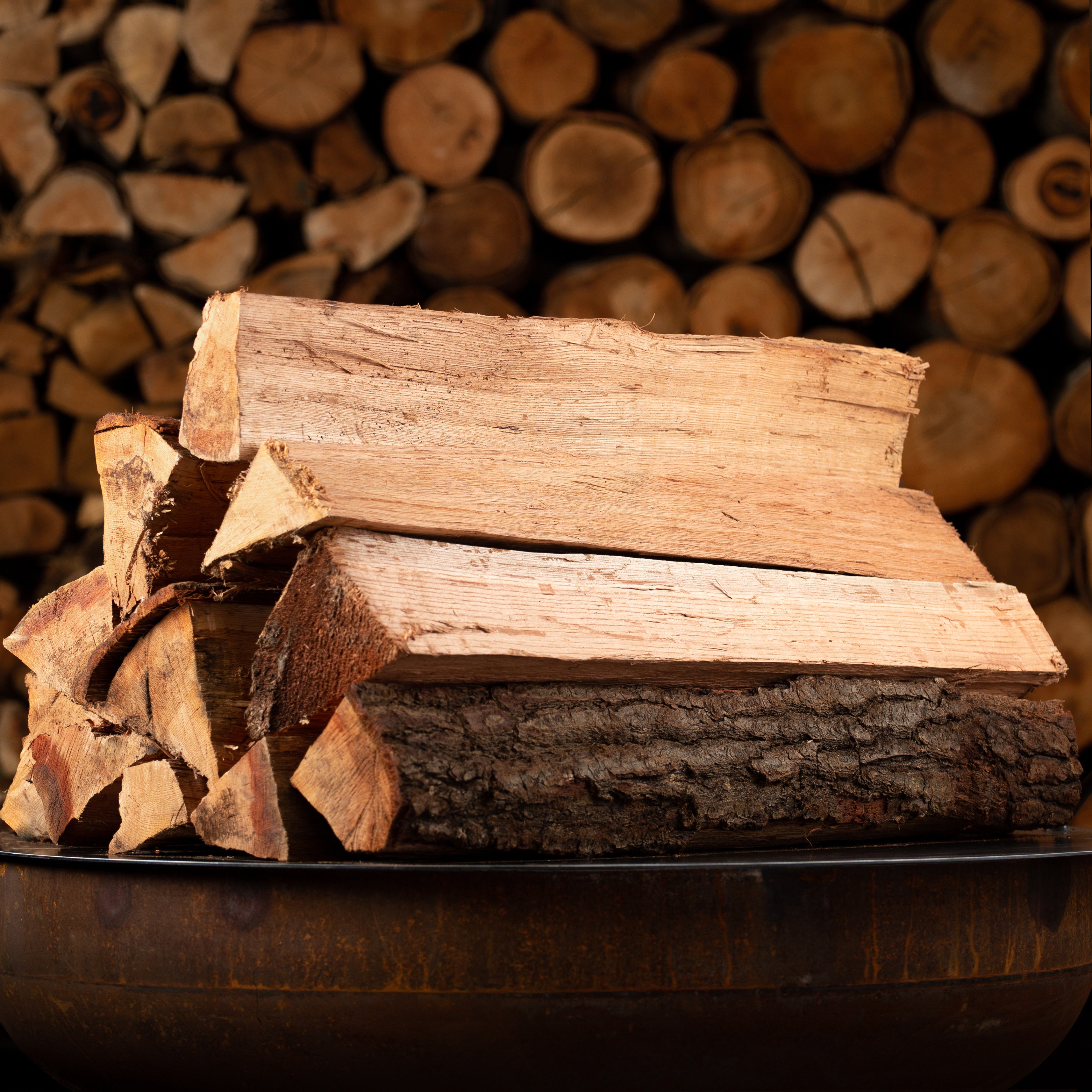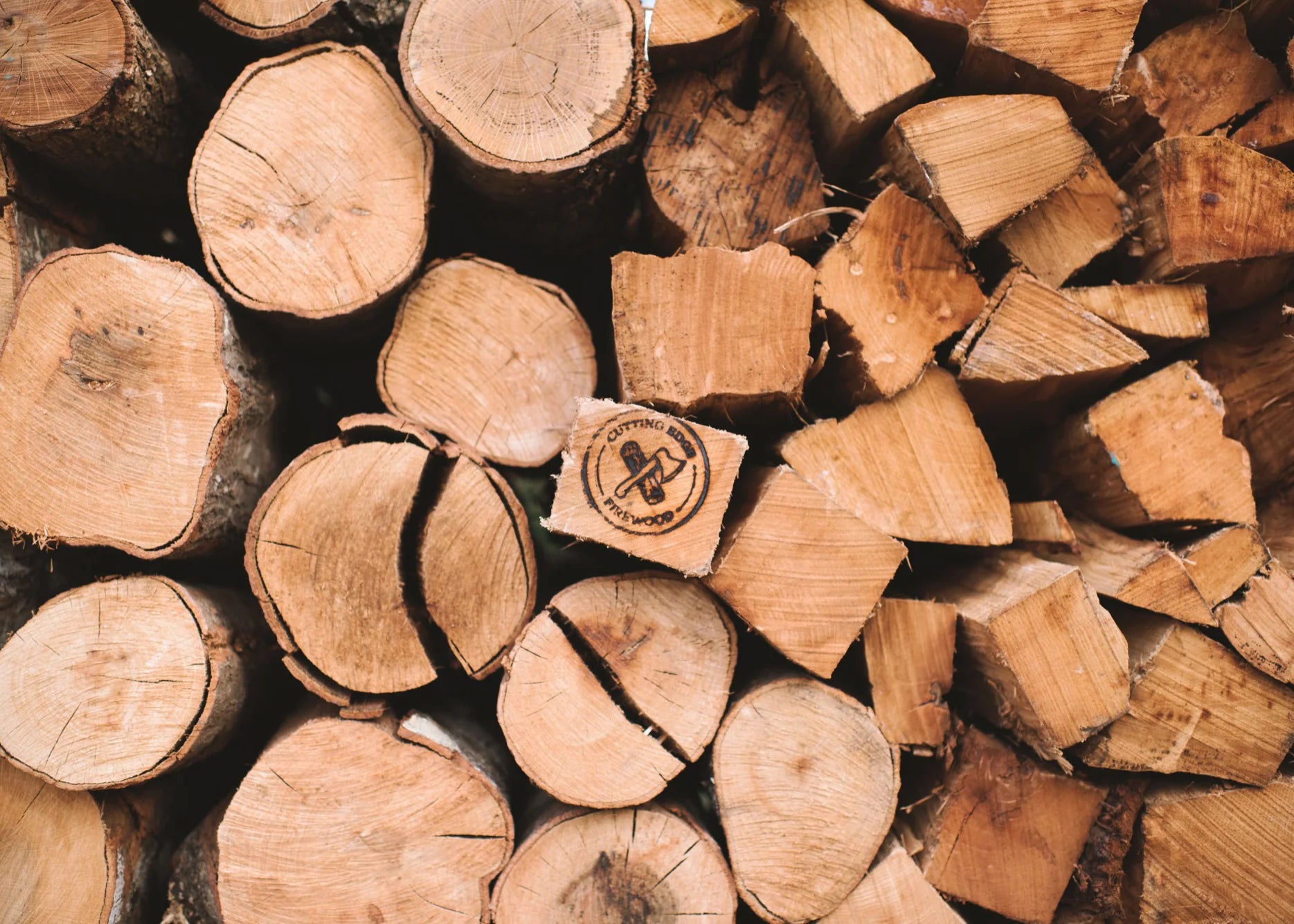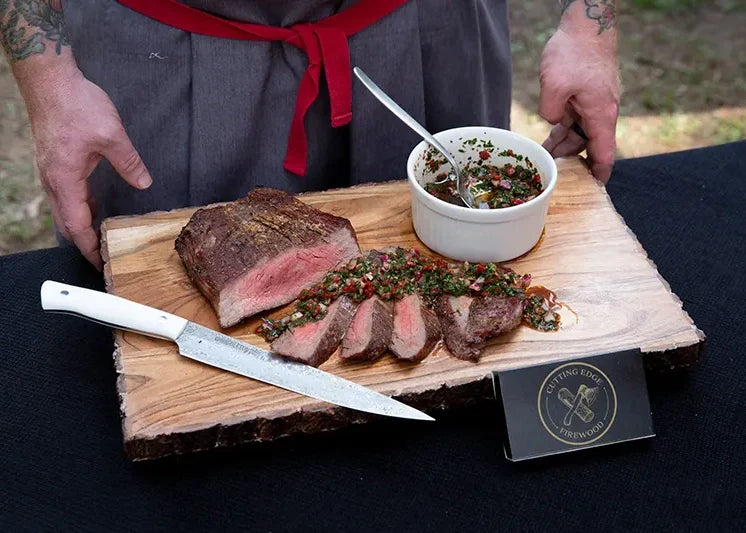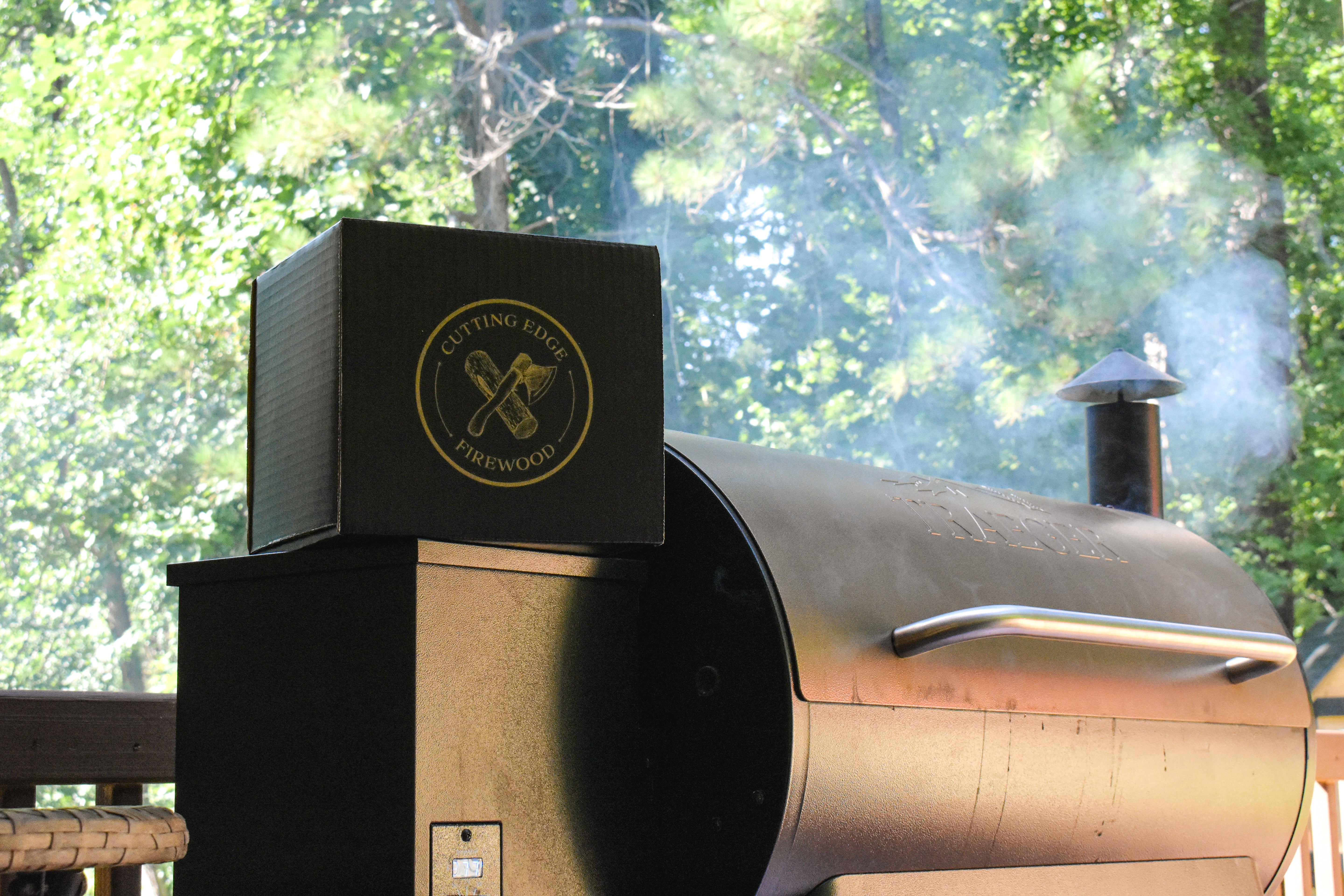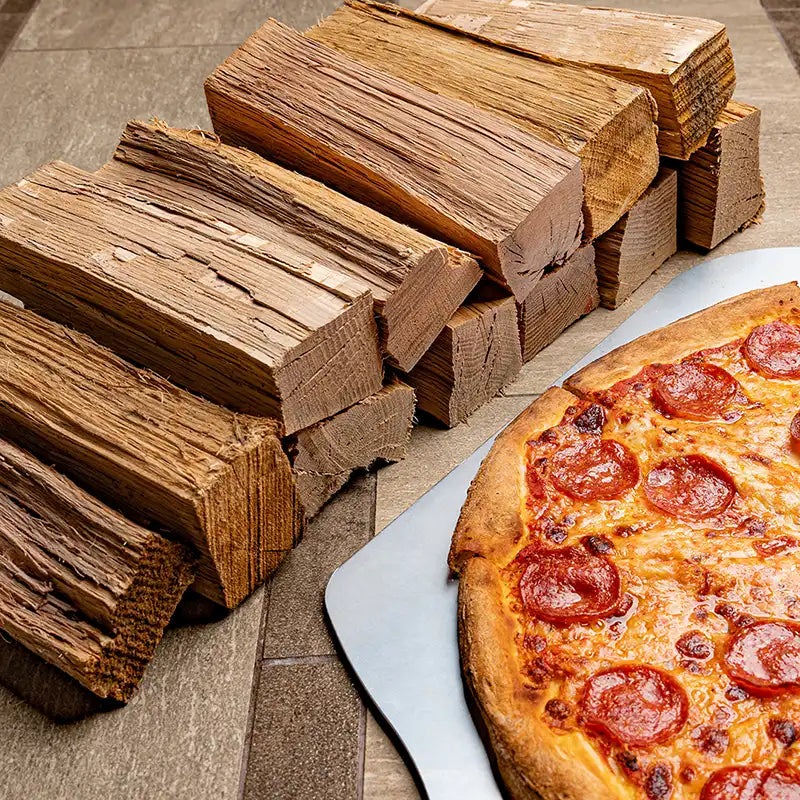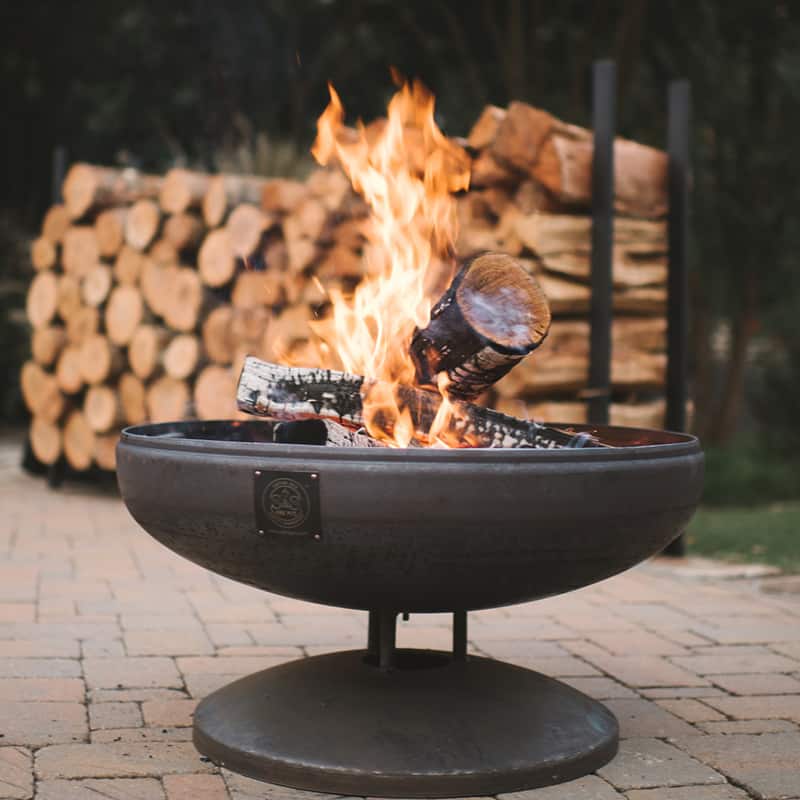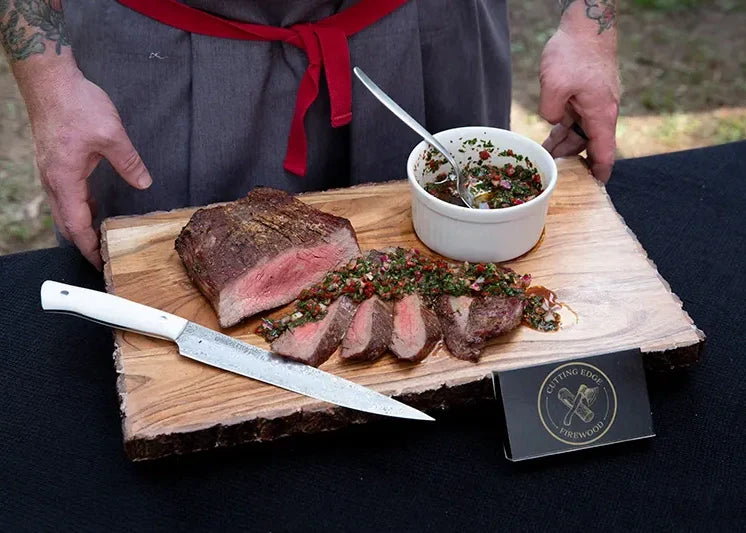Amid the embrace of nature, the smoldering aroma of meats marinated in smoky whispers beckons our senses, transporting us to ancestral evenings gathered around the primal glow of open fires. The enticing glow of flames paired with the intoxicating sizzle as each piece sears to perfection speaks of traditions passed down through generations.
The world of BBQ and fine dining isn't just about culinary skills — it's about capturing moments, evoking feelings, and stirring the soul. Within this realm, smoking meat stands as a testament to time, temperature, and meticulous care.
As we dive deeper into smoking times and temperatures, know that the firewood you choose is the missing link, carefully caressing, nurturing, and transforming your meat into a delectable masterpiece.
Why Is Smoking Temperature Important? Mastering Heat Control
In the timeless journey of open-fire cooking, temperature serves as a compass, guiding us through the flavors and textures nestled within each cut of meat. Its role transcends mere metrics, becoming an essential element in revealing the very essence of the meat.
Too much heat, and one risks drying out the meat, sacrificing its intrinsic juiciness and flavor. On the other hand, too timid an approach might not fully awaken the meat's potential, leading not just to health concerns but also to a subdued taste profile.
Striking the right balance in temperature isn't just about technique — it's a testament to the tradition and craft of smoking. It's about honoring the meat, the fire, and the age-old rituals that bring us closer to nature, to our roots, and to each other as we gather around the enticing glow drawn by the aroma and the promise of a meal cooked to perfection.
What Are the Ideal Smoking Temperatures for Different Types of Meat?
In the world of smoking, understanding the appropriate temperature is a nuanced art deeply embedded in our ancestral traditions of open-fire cooking.
Turkey
With its rich, distinct flavors, turkey naturally lends itself to the deep, aromatic infusion that smoking brings. Turkey legs require a measured approach, with a smoker temperature set ideally between 225°F and 250°F. This careful balance ensures that the meat achieves a succulent finish with a core temperature of 175°F, maximizing its inherent flavors while preserving juiciness.
A whole turkey’s sheer mass means that uniform cooking is key. The same temperature range, 225°F to 250°F, helps unlock the bird's full aromatic potential. As for turkey breasts, they should reach an internal temperature of 165°F, with thighs slightly higher at 175°F For optimal safety and texture.
Pork
Pork, with its natural marbling and dense texture, captures the essence of smoke in a way few other meats can, enhancing its innate sweetness.
Pork butt thrives in the cauldron of a slower, more controlled heat. A smoker set around 225°F allows the meat to slowly imbue the flavors of the smoke, aiming for a fork-tender finish between 195°F and 205°F. The pork shoulder benefits from the same heat settings.
Pork ribs, meanwhile, are best smoked between 225°F and 250°F, aiming for internal temperatures between 190°F and 203°F. Finally, pork chops are typically recommended to be smoked at 145°F — however, you can also achieve the same results by smoking them at a lower temperature for longer.
Chicken
Chicken, while versatile and universally loved, requires a slightly more elevated temperature for optimal flavor infusion. A whole chicken should be smoked with temperatures between 250°F and 275°F.
The USDA recommends an internal finish at 165°F — however, like pork chops, cooking chicken at lower temperatures for longer periods of time can help preserve the moisture content. For instance, cooking chicken to 150°F for three minutes can have the same safety levels as chicken cooked to 165°F, plus it’ll be more juicy.
Chicken thighs, with their deeper flavors, are best smoked at a range of 225°F and 250°F, achieving a satisfying internal finish at 175°F.
Beef
Beef, revered for its robust character and versatility, takes on a transformative quality when smoked, deepening its natural richness. Beef brisket is best approached with a temperature setting of 225°F to 250°F. This ensures that the meat slowly assimilates the smoky essence, finishing ideally between 190°F and 203°F.
Meanwhile, prime rib, revered for its marbling and taste, is at its flavorful zenith when smoked between 250°F and 275°F, aiming for a medium-rare internal finish at 130°F. The tri-tip, unique in its texture, benefits from a starting point of 225°F, to be finished with a sear at elevated temperatures, capturing its essence at a medium-rare 135°F.
And finally, there’s the classic steak. The internal temperature you should look for depends on what level of doneness you desire.
Here’s a breakdown:
- 120°F to 125°F for a rare steak
- 130°F to 135°F for a medium-rare steak
- 140°F to 145°F for a medium steak
- 150°F to 155°F for a medium-well steak
- 160°F to 165°F for a well done steak
In the glowing warmth of the fire and the intricate dance of aromas, the art of smoking brings us closer to nature and the deep-rooted culinary traditions of our ancestors.
How Long Should Each Type of Meat Be Smoked?
In the intricate craft of smoking, time and temperature are closely interwoven, like the tendrils of aromatic smoke that rise from the grill. When it comes to cooking meats, holding them at lower temperatures for extended periods can eradicate harmful bacteria as effectively as higher temperatures in shorter durations.
For many cuts of meat, this process also unlocks the meat's fullest potential, leading to elevated texture and tenderness that melt in the mouth. This method unveils aromas that evoke memories of gatherings, nature, and shared moments over a delectable feast.
Turkey
Turkey, with its robust flavor and lean profile, is especially enhanced when smoked, drawing out a delicate smoky aroma that complements its natural taste. For a whole turkey, smoking at 225°F for three to four hours will slowly but surely bring the bird to a safe internal temperature of 165°F.
A thicker turkey leg, rich in flavor and muscle, can be treated similarly: 225°F for three to 3.5 hours or 250°F for two to 2.5 hours, ensuring the internal temperature reaches 165°F. The turkey breast, meanwhile, requires less time due to its size and tenderness: 225°F for 1.5 to two hours or a brisker 250°F for one to 1.5 hours, both aimed at reaching an internal temperature of 165°F.
Pork
Pork, with its marbled fat and deep flavors, is the perfect canvas for smoky artistry.
Pork butt needs time to break down its dense tissues. At 205°F, expect a prolonged smoke of 10 to 12 hours to achieve an internal temperature of 195°F. Those willing to turn up the heat can aim for 225°F for eight to nine hours to reach the same mark.
When considering cuts like baby back ribs or spare ribs, bone-in variants typically take longer than boneless ones. Bones act as insulators, affecting the cooking meat's heat distribution. So, when you're gauging cooking times, factor in whether the cut is bone-in or boneless.
Chicken
Chicken, always a crowd-pleaser, adopts a golden hue and a tantalizing aroma when exposed to smoke. A whole chicken is best smoked at 225°F for four to five hours or 250°F for three to four hours, ensuring its heart reaches a safe and juicy 165°F.
Chicken thighs, bursting with natural juices, require less time due to their size: 225°F for 1.5 to two hours or 250°F for one to 1.5 hours, both diligently ensuring a final internal warmth of 165°F.
Beef
Steeped in tradition, beef holds a revered place in the pantheon of smoked meats. For beef brisket, given its thick profile and dense fibers, cooking times must be meticulously adhered to, letting a low temperature of around 225°F over 10 to 12 hours unlock its tender potential. As the meat temperature rises, achieving a finished temperature between 190°F and 203°F ensures the peak of doneness and flavor.
Prime rib, a cut that oozes luxury and succulence, thrives in higher temperatures of 250°F to 275°F. The key lies in monitoring the temperature of the meat, ensuring its center stays around 130°F for a medium-rare finish encapsulated by a smoky, crispy exterior.
Tri-tip, a boneless piece of meat shaped like a triangle, takes less time than its counterparts. Often, it's smoked to perfection over two to three hours at 225°F and then seared to encapsulate its flavors. An ambient temperature too high can rob the tri-tip of its natural juices, so maintaining a steady smoking environment is crucial.
Smoking Chart
|
Meat Type |
Cut |
Temperature |
Smoking Time |
Target Internal Temp |
|
Turkey |
Whole |
225°F |
3-4 hours |
165°F |
|
Leg |
225°F |
3-3.5 hours |
165°F |
|
|
Breast |
225°F |
1.5-2 hours |
165°F |
|
|
Pork |
Butt |
205°F |
10-12 hours |
195°F |
|
Ribs |
225°F |
5-6 hours |
190°F |
|
|
Shoulder |
205°F |
12-14 hours |
195°F |
|
|
Chicken |
Whole |
225°F |
4-5 hours |
165°F |
|
Thighs |
225°F |
1.5-2 hours |
165°F |
|
|
Beef |
Brisket |
225°F |
10-12 hours |
190°F-203°F |
|
Prime Rib |
250°F-275°F |
4-5 hours |
130°F (medium-rare) |
|
|
Tri-tip |
225°F |
2-3 hours (then sear) |
135°F (medium-rare) |
As you delve deeper into the alchemy of meat smoking, it's essential to remember that while precision is vital, so is intuition. Armed with this knowledge and inspired by nature, let the tantalizing aroma, visual signs of doneness, and the sizzle of meat guide you.
Tips for Getting the Perfect Flavor
The perfect smoked dish doesn't merely arise from mastering time and temperature but from the harmony of tools, the deftness of seasoning, and the very essence of the cooking wood that fuels the process.
Use the Right Type of Smoker
Choosing the right smoker can be overwhelming for beginners. Electric smokers offer convenience but lack the deep smoky essence that defines the smoking experience. Pellet smokers hint at authenticity, but their reliance on electricity and limited flavor depth make them less ideal.
The true essence of smoking lies with charcoal smokers. They epitomize authenticity, releasing intoxicating aromas that pit masters have revered for centuries. Using a charcoal smoker is an immersive, primal journey.
Charcoal grills, primarily for grilling, can also serve as effective smokers with expertise in heat control and wood chunk management. At the ideal smoker temp, they can create culinary magic.
Season Your Meat
The canvas for your smoky masterpiece is the meat itself. And just as the finest paintings require but a few masterful strokes, so too can your meat achieve grandeur with simplicity.
While marinades and brines have their rightful place in the smokehouse, never underestimate the power of the classic trio: olive oil, salt, and pepper. A light drizzle of quality olive oil not only preserves moisture but adds a layer of rich elegance. Meanwhile, salt brings forth the inherent flavors of the meat, and freshly ground pepper introduces a subtle heat that dances on the palate.
Use a Meat Thermometer
Precision is the key to perfection. In the world of smoking, where even a minute can alter the texture and juiciness of your prize, a digital meat thermometer is not just a tool — it's a trusted confidante.
Ensuring that your meat reaches the desired internal temperature is a testament to both safety and culinary expertise. Whether you're striving for a tender fall-off-the-bone texture or the perfect medium-rare, let the thermometer be your guiding star.
Use the Right Wood
Wood is not just the fuel; it's the soul of your smoke. Each type offers a unique profile, imbuing distinct flavors and aromas into every dish.
Hickory stands out for its longevity and robust flavor, making it ideal for red meats. Pecan lends a classic smoky taste, harmonizing with many kinds of meats. Oak, which is often recommended for beginners, offers a subtle wood-fired taste versatile enough for any meat, from brisket to poultry.
Cherry wood enhances dishes with its sweet essence and a rosy tint, while maple burns brightly, consistently imparting delightful flavors. And apple wood's sweet undertones make it a crowd favorite, especially for poultry and pork.
No matter which you choose, each wood type becomes an integral component of the culinary masterpiece.
The Bottom Line
In the primal dance of fire and flavor, the essence lies in the wood. At Cutting Edge Firewood, our quest transcends mere provision.
We delve into the art of perfect fires, forged from our meticulously hand-picked selection of cooking woods and rigorous drying process. It's this commitment that ensures each fire burns clean, infusing your smoked meats with unparalleled aroma.
Beyond the mere act of cooking, we are here to guide you on a journey into the realm of luxury and craftsmanship. With our cooking wood, it's not just about the fire but the masterpiece it crafts. For smoking enthusiasts, our wood provides the optimal balance of heat and aroma, elevating every dish to its brightest potential.
Shop our hand-selected smoking wood chunks here.
Sources:
Smoking Meat and Poultry | USDA
The 7 Biggest Mistakes When Cooking Chicken | Spruce Eats
Low-temperature long-time cooking of meat: Eating quality and underlying mechanisms | ScienceDirect
Kitchen Thermometers | Food Safety and Inspection Service

